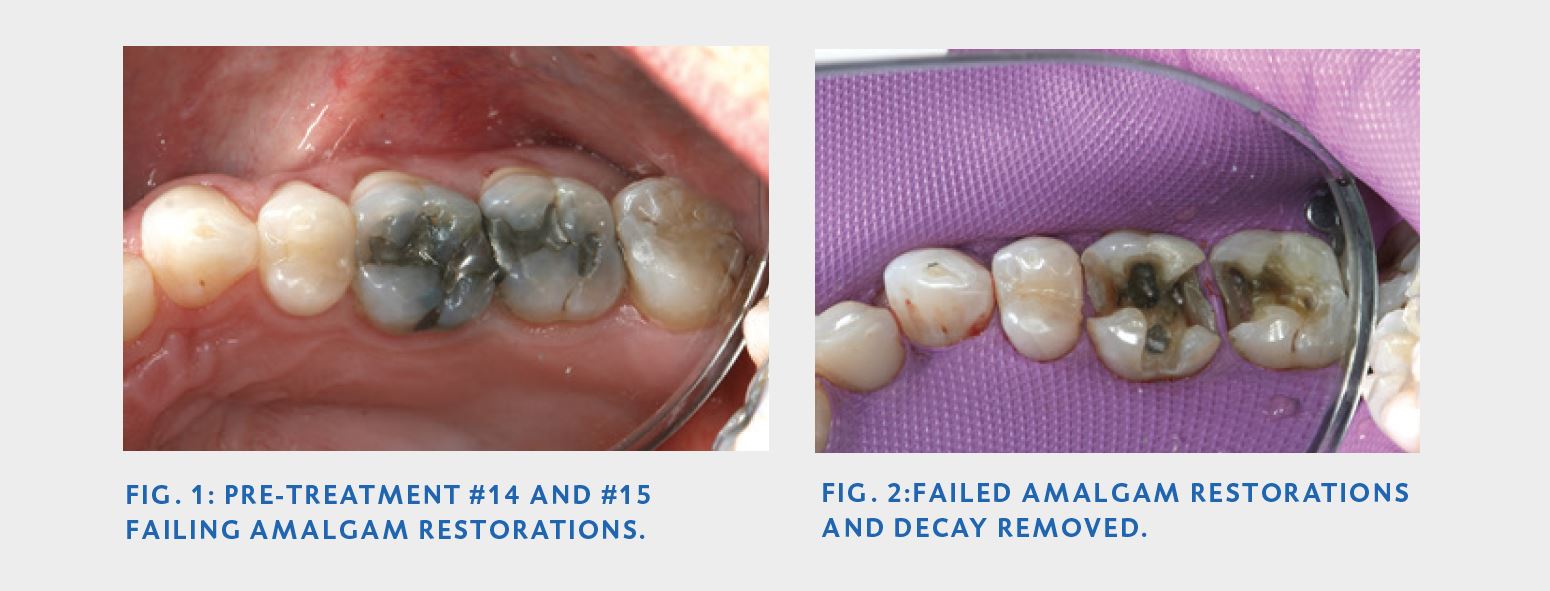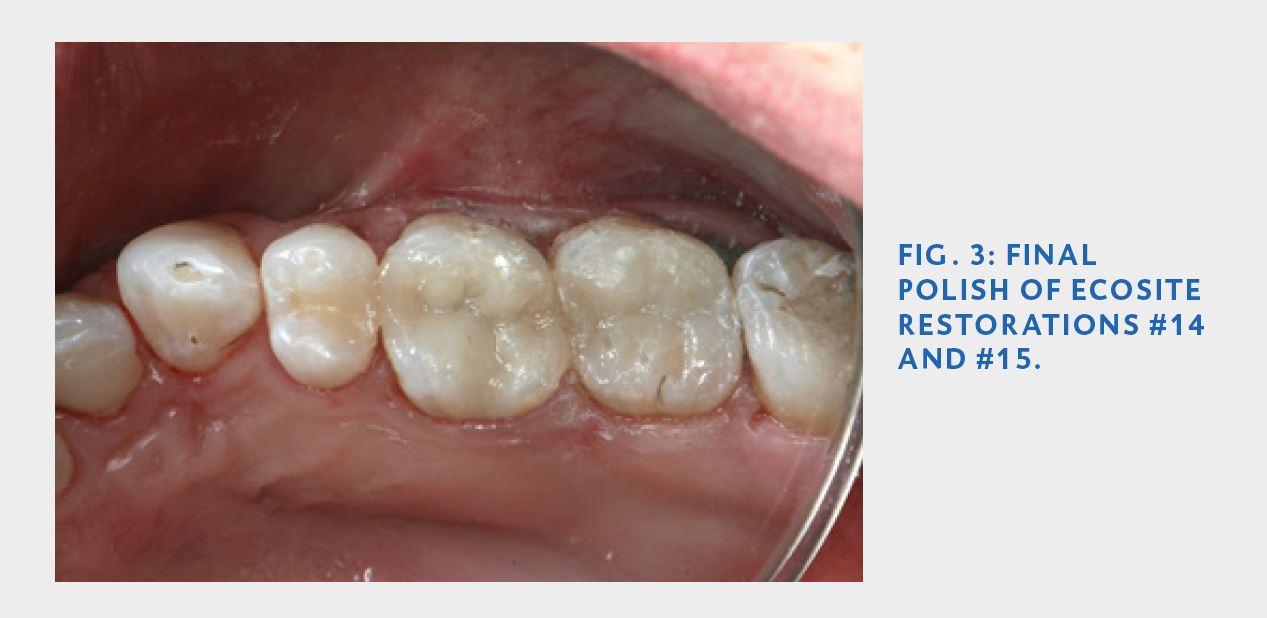Written by Dr. David Rice
The following clinical case demonstrates how choosing the right restorative materials makes it possible to fill both the clinical outcomes gap and the practice productivity gap with posterior composite restorations.
A 52-year-old male presented with back-to-back, 35-year-old-plus, failing amalgam restorations on teeth #14 and #15. Both molars tested WNL to thermal stimuli, EPT, percussion and palpation. They also presented normally upon radiographic exam. (Fig. 1)

After verifying the pulpal status, 0.5 carpule of 4% Septocaine anesthetic with 1:100,000 was buccally infiltrated adjacent to both #14 and #15. Following the infiltration, rubber dam isolation was achieved, and amalgam restorations were removed under high-speed evacuation, decay was also removed, and preparations were refined. Sectional matrices were then placed to restore #15 first and #14 second. (Fig. 2)
Next, I conditioned the teeth with Ecosite Bond and then placed a single increment of Ecosite Bulk Fill. After quickly sculpting, I did a 20-second cure and rough-finished the restorations following the teeth’s natural contours. After verifying that the proximal contacts were ideal, I removed the rubber dam and had the patient rinse. I then checked the occlusion and did a final polish. The shade of the restoration was a very close match to the surrounding teeth. The total procedure took less than one hour. (Fig. 3)
Conclusion
Choosing the optimal restorative materials is critical to mastering posterior composite restorations, and hence to filling gaps in both clinical outcomes and practice productivity. Based on the results observed in our practice, Ecosite Bulk Fill and Ecosite Bond are two such materials.

About the Author

